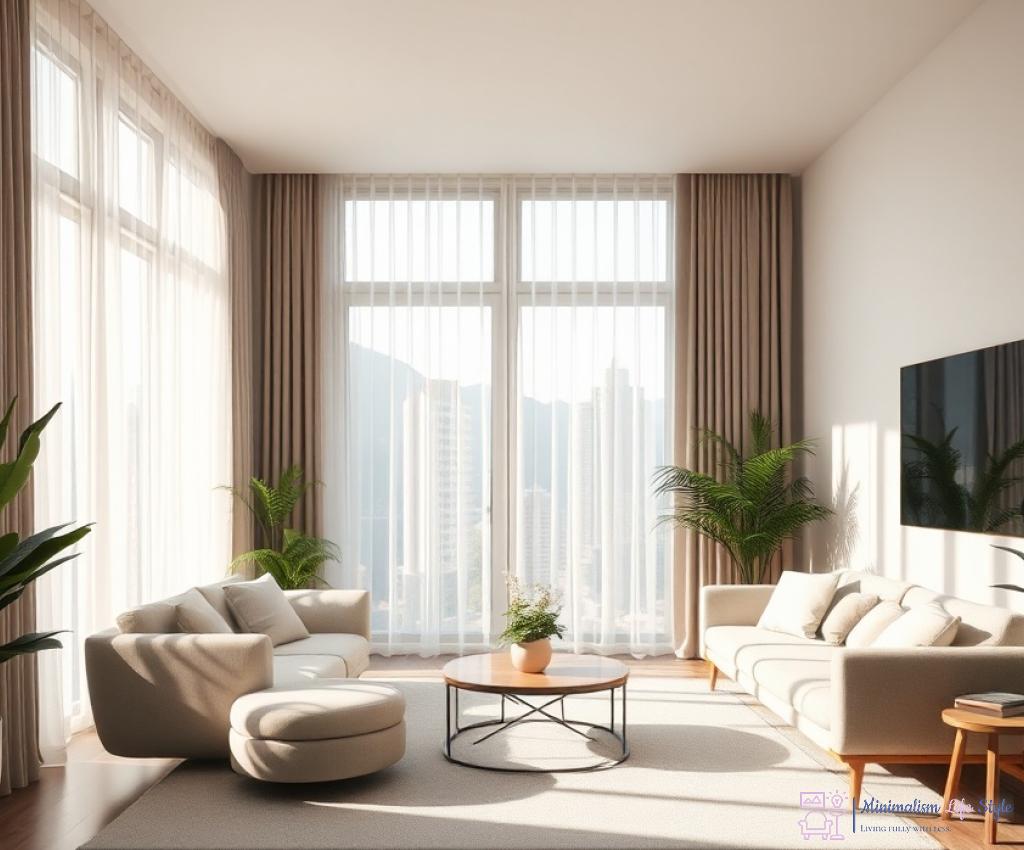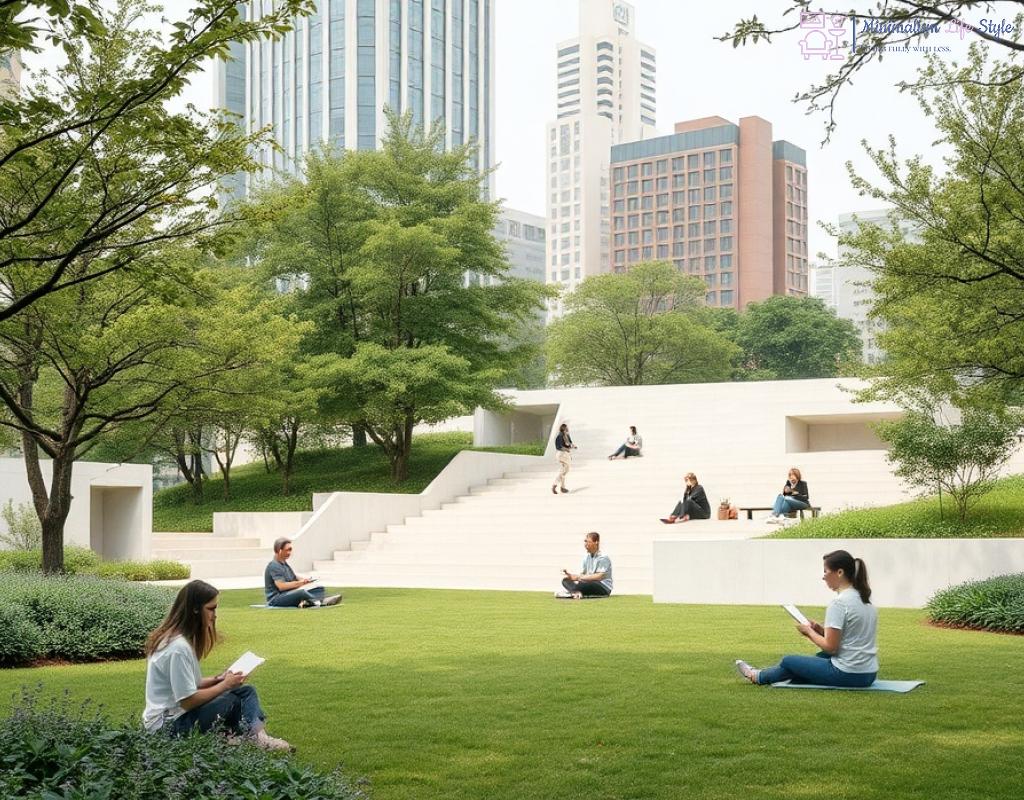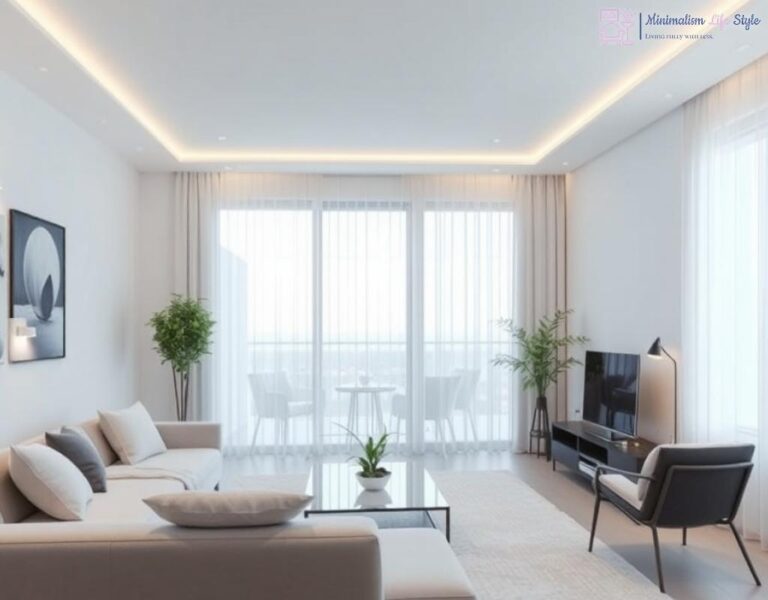Embrace Silence: Creating a Calm Home Environment

Creating a tranquil home environment is not just about aesthetics; it’s about cultivating a sanctuary where noise pollution is dramatically reduced. By making intentional choices in your living space, you can foster a sense of calm that permeates your daily life. From the layout of your furniture to the materials you choose, every detail contributes to a quieter atmosphere.
One of the most effective ways to minimize noise is to embrace smart acoustics solutions. Incorporating sound-absorbing materials and clever design elements can significantly alter the sound dynamics of your home.
- Soft Furnishings: Add rugs, curtains, and cushions made of thick fabrics to absorb sound.
- Wall Treatments: Consider acoustic panels or textured wallpaper that can help in dampening noise.
- Strategic Layout: Arrange furniture to create barriers that block and absorb sound, especially in open-concept spaces.
These strategies not only enhance the sound quality in your home but also contribute to a cozy and welcoming atmosphere.
Beyond physical changes, adopting mindful living practices can further enrich your journey towards a quieter life. Establishing routines that prioritize silence can help you enjoy the serenity you crave.
- Digital Detox: Set aside specific times to disconnect from devices, allowing natural sounds to fill your home.
- Quiet Hours: Designate certain hours of the day as ‘quiet time’ for you and your family to relax without distractions.
- Meditation and Mindfulness: Incorporate meditation sessions into your daily routine to enhance your appreciation of silence.
These practices not only reduce noise but also promote mental clarity and emotional well-being, making your home a true refuge from the chaos of the outside world.
Mindful Commuting: Choosing Quieter Travel Options

In our quest for a quieter existence, the journey often begins before we even arrive at home. The daily commute can be a source of significant noise pollution, impacting our mental well-being and overall tranquility. By making conscious choices regarding our travel methods, we can significantly reduce the cacophony that often accompanies our routines. This section explores how thoughtful commuting choices can contribute to a more peaceful life.
When we think of commuting, the usual suspects like cars and buses often come to mind. However, exploring alternative modes of transport can drastically reshape our travel experience. Utilizing bicycles or electric scooters not only promotes a quieter environment but also encourages a healthier lifestyle. The gentle hum of an electric bike or the soft sounds of nature during a leisurely ride can instantly elevate your mood, providing a stark contrast to the honking horns and rumbling engines of traditional vehicles.
Another avenue worth considering is public transportation. While it may seem counterintuitive due to the crowd, many public transport systems are designed to be quieter than personal vehicles. Trains, subways, and trams often glide smoothly along their tracks, creating a serene atmosphere for commuters. Additionally, the act of sharing a space with others can foster a sense of community, enhancing the overall experience. Choosing off-peak hours for travel can further enhance this tranquility, allowing you to enjoy a peaceful ride, free from the hustle and bustle.
To truly embrace the concept of mindful commuting, it’s essential to incorporate calming practices into your travel routine. Consider listening to soothing music or engaging in a podcast that promotes relaxation, transforming your commute into a moment of peace rather than a necessary evil. Furthermore, practicing mindfulness techniques, such as deep breathing or visualization exercises, can significantly reduce the stress associated with commuting. By shifting your focus from the noise around you to the quiet within, you can create a more tranquil travel experience.
Soundproofing Secrets: Simple DIY Techniques
As we navigate the bustling world around us, the desire for a peaceful sanctuary at home becomes increasingly vital. While creating a serene environment often begins with mindful living and thoughtful commuting, the next step is to fortify our spaces against unwanted noise. This is where soundproofing secrets come into play, offering practical, do-it-yourself techniques that can transform your home into a haven of tranquility. By employing these simple strategies, you can effectively diminish the disturbances that disrupt your peace.
One of the fundamental aspects of soundproofing is the selection of materials that can absorb or block sound waves. An excellent starting point is the use of mass-loaded vinyl, a dense material that can be applied to walls, ceilings, and floors. It works remarkably well to inhibit sound transmission between rooms. For those looking for a more accessible option, consider using heavy curtains or thick carpets. These elements not only enhance the aesthetic appeal of your home but also serve as effective sound barriers. Additionally, implementing weather stripping around doors and windows can prevent noise from creeping in from outside, creating a more serene indoor environment.
Beyond material choices, there are innovative DIY methods that can further bolster your soundproofing efforts. For example, creating a soundproof wall can be as simple as hanging a series of pictures or fabric panels that incorporate sound-absorbing materials. This approach not only enhances the decor but significantly reduces echo and reverberation in your living space. Another effective technique involves using acoustic caulk to seal gaps in walls and around windows, ensuring that sound does not find its way through even the smallest cracks. By applying these soundproofing techniques, you can experience a remarkable difference in your home’s acoustics, allowing you to enjoy your personal oasis.
Incorporating these soundproofing secrets into your home can dramatically alter your experience of daily living. Imagine retreating into a space where the clamor of the outside world is muted, allowing you to focus on what truly matters. With a little creativity and resourcefulness, you can craft an environment that not only looks good but sounds good too, encouraging a lifestyle filled with peace and mindfulness.
The Power of Nature: Leveraging Green Spaces for Peace
In our fast-paced urban environments, the hustle and bustle often drown out the soothing sounds of nature. However, integrating green spaces into our lives can serve as a powerful antidote to noise pollution. Not only do these serene environments provide a refuge from the chaos, but they also promote mental well-being and enhance our overall quality of life. Discover how you can harness the calming power of nature to create a more peaceful existence.
Nature has an extraordinary ability to mask unwanted noise and replace it with harmonious sounds. The gentle rustle of leaves, the chirping of birds, and the trickle of water can create a soothing soundscape that promotes relaxation and mindfulness. By immersing ourselves in these natural environments, we can significantly reduce stress levels and improve our mental clarity. Studies have shown that spending time in green spaces not only lowers cortisol levels but also enhances mood and cognitive function.
Transforming your living space into a green sanctuary doesn’t have to be overwhelming. Here are some practical steps to infuse nature into your environment:
- Indoor Plants: Add a variety of houseplants that thrive in your space. Plants like peace lilies and snake plants not only purify the air but also create a calming atmosphere.
- Outdoor Retreat: If possible, create a small garden or patio area where you can enjoy nature. Incorporate elements like water features, seating areas, and native plants to enhance tranquility.
- Nature Walks: Make it a routine to visit local parks or green spaces. Regular walks in nature can significantly diminish the stress induced by urban noise.
- Biophilic Design: When renovating your home, consider biophilic design principles. This includes maximizing natural light and using natural materials to create a connection with the outdoors.
Engaging with your community to create and maintain green spaces can amplify the benefits of nature. Community gardens, park clean-ups, and green initiatives not only foster a sense of belonging but also contribute to a quieter environment. By working together to enhance local green spaces, residents can enjoy the serenity of nature while reducing the noise pollution that often plagues urban areas.
In conclusion, leveraging the power of nature is a vital strategy in the quest for a quieter life. By embracing green spaces, whether in our homes or communities, we can cultivate a peaceful sanctuary that nurtures our minds and spirits.
Digital Detox: Reducing Noise from Technology
In a world dominated by screens, notifications, and constant connectivity, the digital landscape has become a cacophony of distractions that often drown out our peace. As we navigate through the noise of technology, it’s crucial to consider the impact of our digital habits on our mental well-being. The phenomenon of digital noise—ranging from incessant alerts to the overwhelming barrage of information—can contribute significantly to our daily stress levels. By implementing a digital detox, we can reclaim our tranquility and pave the way for a quieter existence.
To effectively reduce the noise from technology, the first step is to set clear boundaries. This means establishing designated times for device usage, which allows you to engage with technology mindfully rather than impulsively. For instance, consider designating specific hours of the day as screen-free time, where you can focus on activities that bring you joy without the interruptions of digital notifications. This practice not only enhances your ability to concentrate but also fosters deeper connections with your surroundings and loved ones.
Furthermore, you might explore the benefits of turning off non-essential notifications. This simple yet profound act can dramatically reduce the constant buzzing and beeping that permeates our lives, allowing for moments of genuine silence. By curating your digital environment and being selective about what deserves your attention, you can cultivate a calmer atmosphere that supports your quest for peace.
Incorporating mindfulness into your digital interactions is another powerful strategy to mitigate noise pollution. One effective method is to engage in mindful consumption of digital content. Instead of mindlessly scrolling through endless feeds, allocate time for intentional browsing. Seek out content that uplifts your spirit, educates, or inspires you, thereby transforming your online experience into a source of enrichment rather than distraction. This shift not only diminishes digital noise but also enhances your overall well-being.
Moreover, consider integrating moments of digital detox into your routine. Take breaks from screens, even if just for a few minutes throughout the day, to reconnect with the real world around you. During these breaks, engage in activities that promote peace—whether it’s going for a walk, practicing breathing exercises, or simply enjoying a cup of tea in silence. These pauses not only refresh your mind but also serve as a reminder of the beauty of the quiet moments often overshadowed by digital noise.




